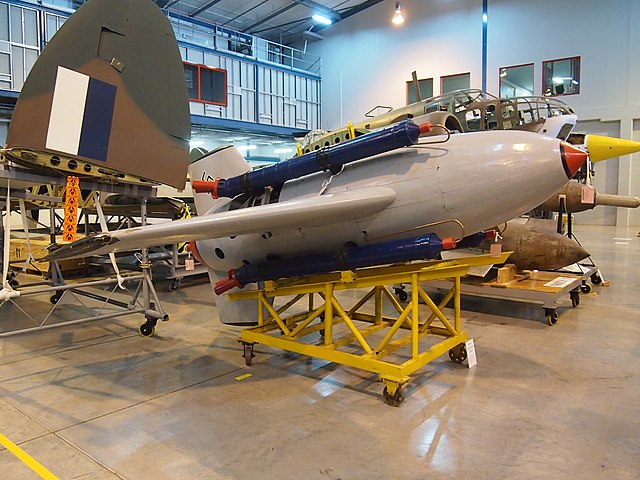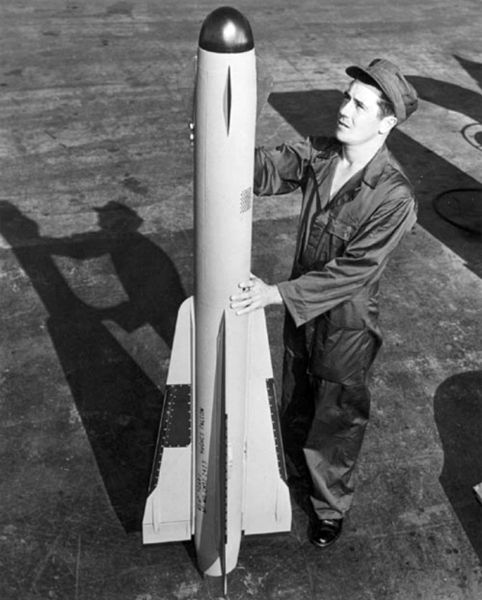The de Havilland Firestreak is a British first-generation, passive infrared homing air-to-air missile. It was developed by de Havilland Propellers in the early 1950s, entering service in 1957. It was the first such weapon to enter active service with the Royal Air Force (RAF) and Fleet Air Arm, equipping the English Electric Lightning, de Havilland Sea Vixen and Gloster Javelin. It was a rear-aspect, fire and forget pursuit weapon, with a field of attack of 20 degrees either side of the target.
De Havilland Firestreak
Lightning T4 trainer with a dummy Firestreak missile drill round (1964)
A Firestreak on its trolley. The fuse windows are visible adjacent to the red rubber bands used to protect them.
Firestreak at RAF Museum Cosford
Infrared homing is a passive weapon guidance system which uses the infrared (IR) light emission from a target to track and follow it seamlessly. Missiles which use infrared seeking are often referred to as "heat-seekers" since infrared is radiated strongly by hot bodies. Many objects such as people, vehicle engines and aircraft generate and emit heat and so are especially visible in the infrared wavelengths of light compared to objects in the background.
A modern German Air Force IRIS-T infrared homing air-to-air missile
The Vampir nightscope used a photomultiplier as the sighting system and provided illumination with an IR lamp mounted above the scope.
The Madrid seeker was being developed for the Enzian surface-to-air missile.
The AIM-4 Falcon was the first IR guided missile to enter service. The translucent dome allows the IR radiation to reach the sensor.








